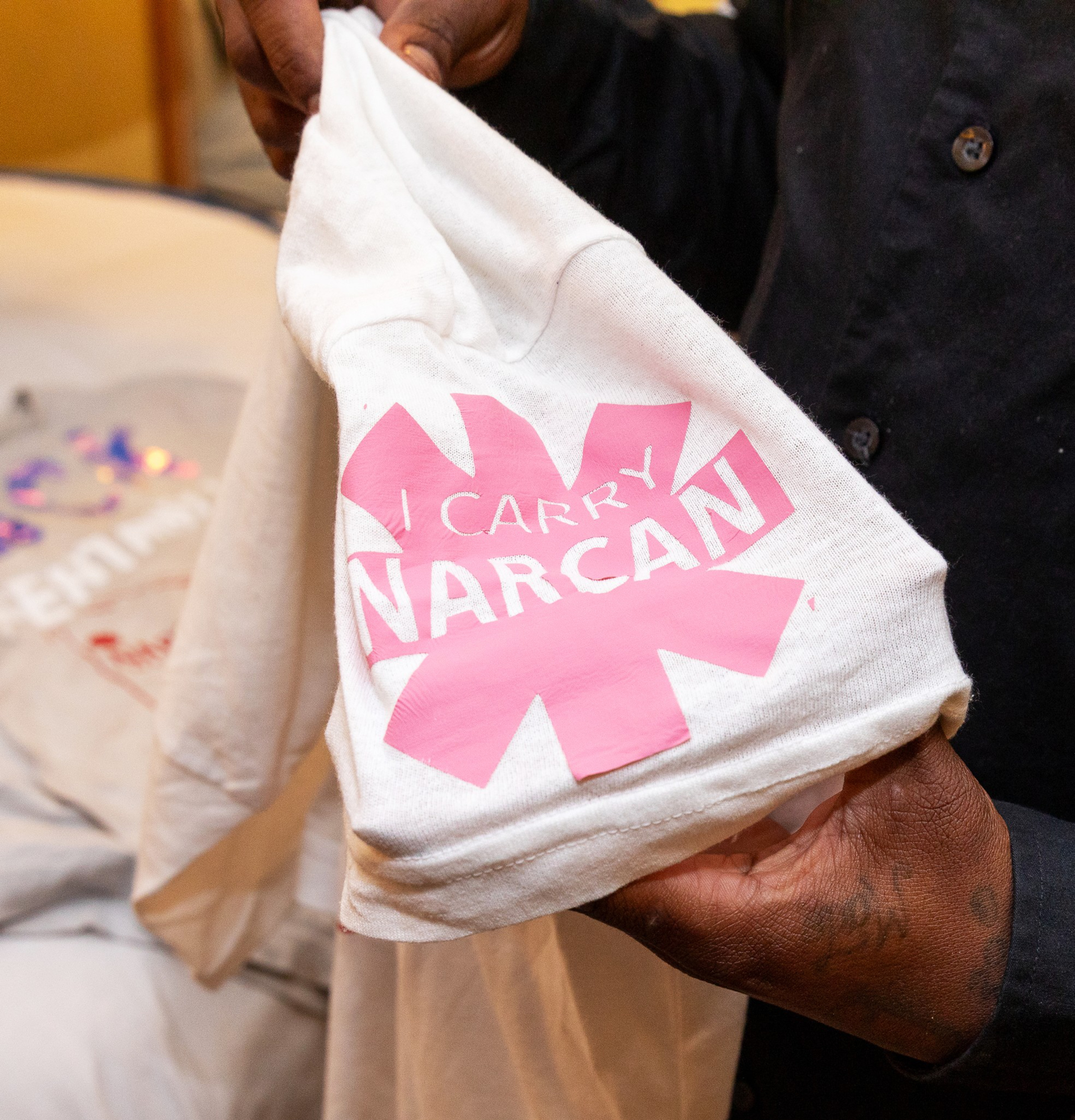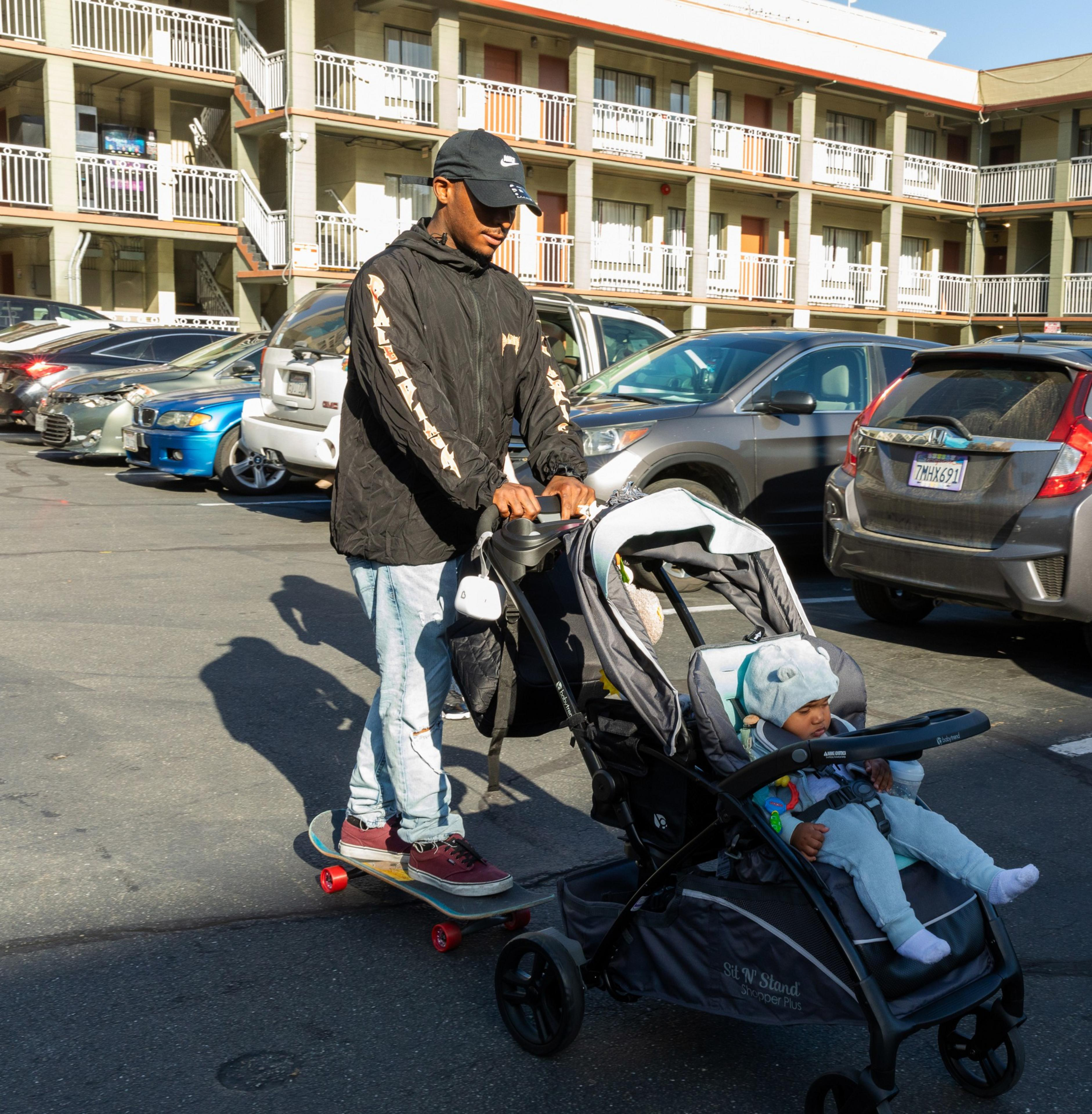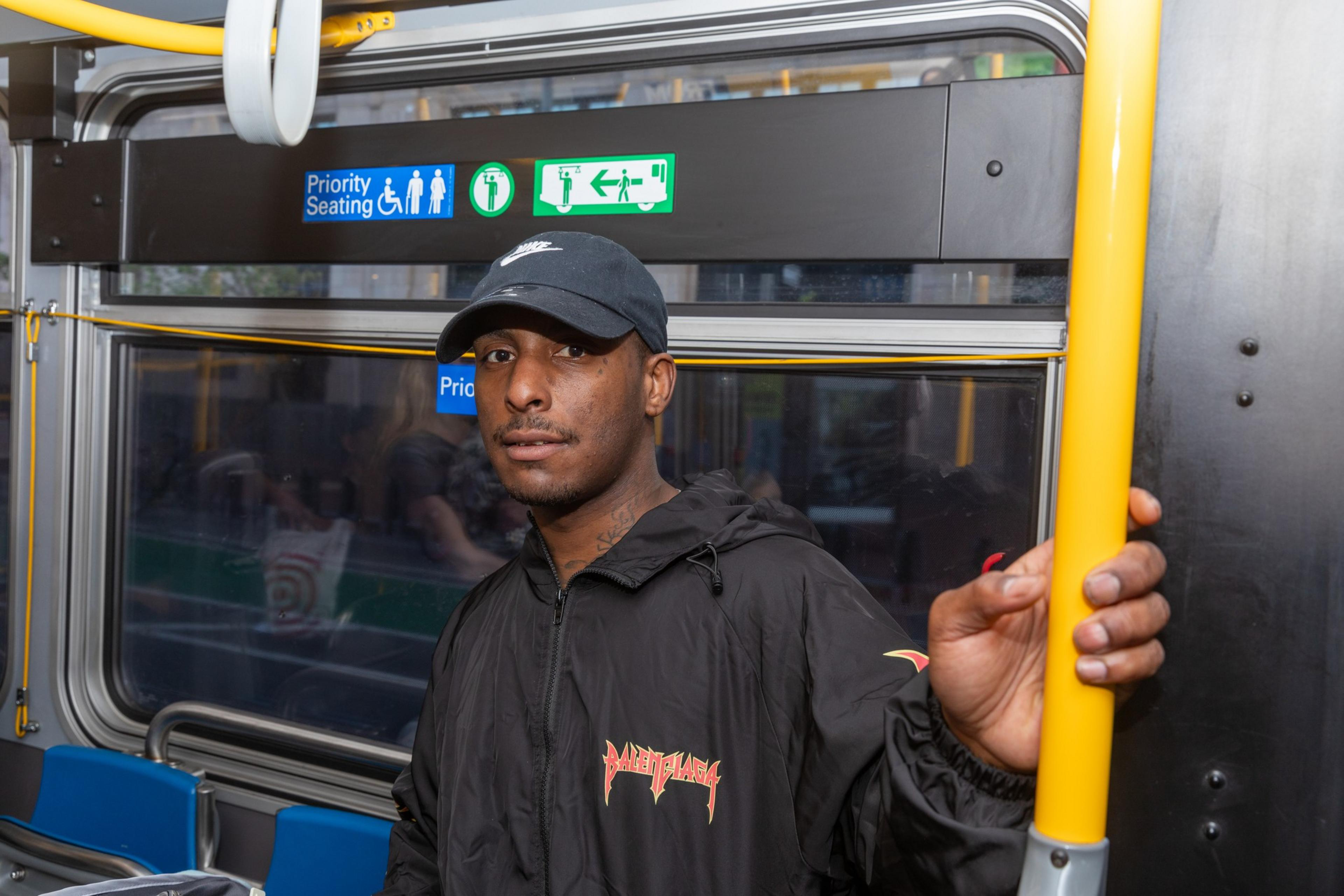Larriesha Mobley woke up in an apartment over an hour away from her son, her friends and everything she knew. It was the first time she had housing of her own in years. But she was still far from home.
The San Francisco native would have to travel to the city nearly every day to visit her son and attend appointments, but she didn’t have her own car. To make things worse, she said the new apartment was infested with cockroaches.
Mobley was in a city-funded program called Rapid Rehousing, which provides homeless people with two-year rental subsidies in apartments across the Bay Area.
She grew up in San Francisco’s Visitacion Valley and Bayview neighborhoods, but she was unable to find housing in the city through the program. The city’s homelessness department moved her to Antioch and helped furnish the apartment. But the commute and the cockroaches quickly overwhelmed her. She’s since returned to living with her dad.
“I think the objective is to push us out,” Mobley said of the Rapid Rehousing program. “I didn’t want to move to Antioch.”

At the cost of roughly $26 million this year, San Francisco’s Rapid Rehousing program has temporarily housed 4,679 people between 2020 and 2023. The program is one of the city’s most frequent responses to the growing homelessness crisis.
However, the initiative is also responsible for moving over 100 Black families and individuals out of the city in the last three years. Experts and nonprofit leaders say it’s contributing to the disappearance of the city’s historic African American communities.
New data obtained by The Standard shows Black people, who make up 43% of the program’s participants, are far more likely than other groups to move outside of the city.
The data shows that just 50% of Black individuals and families in the program were housed in San Francisco, compared to 82% of white people, 79% of multiracial Hispanic or Latino people, and 59% of Hispanic or Latino people. Out of nine Asian individuals and families, eight were housed in the city. The department started tracking this data for individuals in 2021 and for families in 2023.
Those who move away from the city face being separated from their families, schools and doctors. Many once again become homeless.
Several program participants told The Standard they accepted housing out of town, only to find themselves stranded in unfamiliar cities without a car, community or support.
The program gives clients three months to find an apartment with a voucher, which usually guarantees a 70% discount on rent and doesn’t dictate where they live. But clients say finding a landlord who will accept the voucher is difficult, forcing them into distant corners of the Bay Area.
“It’s really hard to find something in San Francisco,” Mobley said. “It’s a one in a thousand chance.”
‘Still on the brink’
Mercedes Bullock, a 35-year-old Black mother who was born and raised in San Francisco’s foster care system, moved to downtown Napa through the program in 2021.
Having experienced homelessness since she was born, Bullock initially jumped at the opportunity for housing—even though the only apartment she could find was an hour and a half away from everyone and everything she knew.
For months, she left her Napa apartment every day at 5 a.m., using four buses to drop her daughter off at school and attend work in San Francisco as a social worker. She recalled routinely experiencing racism while living in the predominately white community and said she spent hundreds of dollars a month on her commute.

“I had housing, but I still felt like I was on the brink,” Bullock said. “I moved away from the only community that I had.”
When her daughter’s school let out for summer break, she couldn’t afford a babysitter and had no choice but to quit her job, she said. She was soon evicted and back living on San Francisco’s streets.
“They give you the voucher and you’re just on your own,” Bullock said. “I went to Napa just to be forgotten.”
It was another three years before she found housing again—this time in San Francisco.
Between 2020 and 2023, at least 596 families and individuals, or 13% of the program’s total clients, ultimately returned to living on the streets or in shelters, according to the data. The city’s homelessness department doesn’t know what happened to an additional 738 clients, as it didn’t collect their data.
The rate of clients reentering homelessness improved between 2021 and 2023, shrinking from 20% to just 8% of all outcomes as roughly 63% of the program’s clients transitioned into permanent supportive housing last year. However, data from the first five months of 2024 shows the rate of reentering homelessness has jumped back up to 12% while transitions into permanent housing have dipped to 58% of all outcomes.
The department said all program clients are offered the option to meet with a case manager weekly for the first 90 days after their move and twice monthly after that. Clients also undergo “exit planning” 90 days before their subsidy expires in an effort to ensure they don’t return to homelessness, the department said.
‘A better light’
Julius Lowery spent years living in tents in the Tenderloin, addicted to methamphetamine, after his parents abandoned him and his grandparents died when he was 12 years old.
While he struggled with homelessness and addiction, he watched the neighborhood he grew up in, the Fillmore, morph into something he no longer recognizes. Everything grew more expensive as his community slowly migrated to other parts of the state. Still, he dreamed of one day raising a family in San Francisco.
When his son, Julius Junior, was born nine months ago, his whole perspective changed. He found sobriety and became disillusioned by the tents on the sidewalk and the state of his city.
“I lived in all the tent cities. I was running around with a needle in my arm,” Lowery said. “But now I’ve found a better light. … I don’t want my son to grow up in all that.”


When the city granted Lowery a Flexible Housing Subsidy Pool, a rare type of voucher that guarantees a 70% discount on rent for the rest of his life, he wondered whether he really wanted to raise a family in the city. The city gave out just 77 of those vouchers this fiscal year, records (opens in new tab) show. The demand for housing is in the thousands every year.
Lowery looked around the city’s housing market, saw a shortage of three-bedroom units, and extended his search to the greater Bay Area. He said he plans to tour two houses in Elk Grove, a city just outside of Sacramento, and may move his family there in the coming months.
“If we could stay in a house out here [in San Francisco] it would be amazing,” Lowery said. “But it’s just so hard.”

Tinisch Hollins, vice chair of the city’s reparations committee and a supervisor for an early iteration of the city’s Rapid Rehousing program, said many families move out of San Francisco without knowing the implications it will have on their lives.
Hollins said case managers in the program have difficulties keeping in touch with families that move away, and many clients have to commute back to San Francisco for work.
“They go to these unincorporated areas of the state and they don’t have any infrastructure,” Hollins said. “You get a nicer house. It’s bigger. But they don’t have any of the services and support that families in transition need.”
Lowery acknowledged that he’s afraid of moving to a city with a mostly white population, where he’s unsure whether he can land a job with his criminal history.

He said he still hopes to give back to the city he grew up in and talked of applying for a job at the nonprofit Urban Alchemy. But he’s unsure how he would commute to San Francisco without a car.
“I’m moving to a white community. I don’t know what it’s like,” he said. “It’s scary.”
‘Is this a place for me?’
With every Black person who leaves San Francisco, it becomes more difficult for other Black people to feel comfortable in the city, according to Shellena Eskridge, executive director of the nonprofit Homeless Prenatal Program, which provides support to homeless families.
Eskridge said she’s disturbed by the displacement of Black people through the Rapid Rehousing program, as seen in the department’s data, but said she wasn’t surprised. She grew up in San Francisco’s Bayview neighborhood and has watched most of her friends and family leave the city, unable to keep up with the rising costs of living.

“This is nothing new,” Eskridge said. “The erasure of Black people in San Francisco is a longstanding problem.”
Black restaurants, barbers and churches have slowly disappeared from the city, moving to other parts of the Bay Area or ceasing to exist at all.
Between 1970 and 2021, the number of Black people in the city dropped from 13.4% to 5.7% of the city’s total population, according to census data. Meanwhile, Black people make up an increasingly large share of the city’s homeless population, totaling 36% of all homeless people in the city, according to a 2022 survey. Data released in April found family homelessness has doubled in the city over the past two years among all races.
Eskridge said she’s constantly driving to the East Bay to visit her cousins or attend family gatherings. Sometimes, she wonders if she’ll be next to leave.
“It is very difficult as a Black person to live here,” Eskridge said. “It is my home and I want to be proud. But if you see less and less of yourself you start to realize, ‘Is this a place for me?’”

Rapid Rehousing data shows that nearly 40 Black families and individuals moved to Contra Costa County, with 18 moving to Antioch between 2021 and 2023. Some moved as far away as Sacramento.
Hollins said many landlords in San Francisco are unwilling to rent their properties to Black families, particularly those in the subsidy program.
“People do not want to rent to Black people,” Hollins said. “I saw it with my own eyes.”
In a statement, the Mayor’s Office pointed to efforts to rebuild the city’s public housing sites as well as her Dream Keeper Initiative, which has poured $107 million into Black-owned organizations.
“The reality is that there is not enough affordable housing and that is why Mayor Breed has focused not only on breaking down the barriers that get in the way from providing more housing, but also on creating targeted housing programs for low-income residents,” the statement read.

The homelessness department said the Rapid Rehousing program provides people the choice to live where they please and the displacement of Black families is due to gentrification and a lack of affordable housing. The department also said the city has a shortage of three-bedroom rental units, forcing larger families to look elsewhere in the Bay Area.
“Rapid Rehousing is first and foremost a housing choice program,” the department said in a statement. “San Francisco’s diminishing Black population is a symptom of larger issues, including the lack of affordable housing available in the city and impacts of gentrification in traditionally Black neighborhoods.”
However, the program’s clients were quick to dispute the department’s characterization of their departure from the city.
“Almost none of my family and friends live in San Francisco anymore. A lot of people lost their homes,” Bullock said. “And that is not by choice.”
